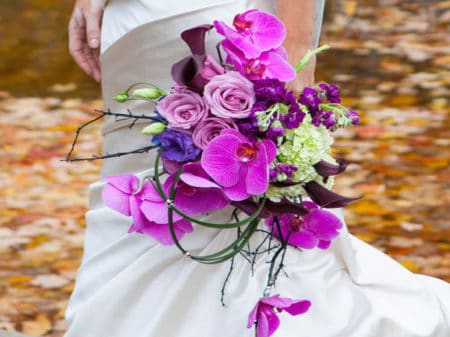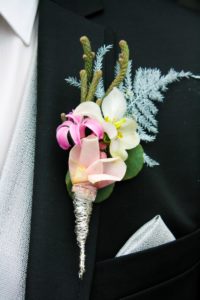As you plan your wedding, you’ll start to think about which wedding traditions you want to keep in place and which ones you’d like to omit or update. Many wedding traditions have evolved over the centuries since they began, and it’s interesting to know how and why they began in the first place. The wedding experts at Griffin’s Weddings are here to help you learn more about some of these specific wedding traditions. This way, you can decide for yourself which ones you’d like to include in your wedding and which ones you’ll modernize. Take a look as you think about how you’ll incorporate age-old traditions in your big day.
The Bridal Bouquet
The original bridal bouquets were comprised of herbs, garlic, and grains to ward off evil spirits that might try to sabotage the wedding or bring bad luck to the happy couple. Eventually, the kitchen ingredients were substituted for flowers, allowing brides everywhere to feature their favorite colors or a particular bloom that holds special meaning to them. Today, brides get creative with their bouquet, carrying any manner of creative floral designs as they walk down the aisle to their future.

Your Bridesmaids
The original idea behind a group of girlfriends comes from Ancient Rome. The bridesmaids would dress to match the bride and carry similar flowers to confuse evil spirits and keep them from robbing the bride of her joy. This helped the bride and groom avoid being cursed on their wedding day. Today, brides include their sisters, cousins or closest friends as bridesmaids. While dresses might match, the newest spin on this old tradition is for bridesmaids to wear similar colors in a variety of styles to flatter their own figures and show off their own style a bit.
The Sweet Flower Girl
According to Ancient Roman tradition, young girls announced the arrival of the bride by walking down the aisle carrying a sheath of wheat. Wheat stood for good fortune, fertility and wellness- a blessing being poured over the bride and groom at the start of the ceremony. Eventually, the sheaths of wheat were replaced with flowers and then flower petals to be dropped before the bride walks down the aisle. While this is an optional addition to your wedding, the sweetness and innocence of children in a ceremony is always a bonus.
The Little Ring Bearer
In Victorian times, it was the responsibility of a pageboy to carry the rings and prayer book down the aisle during a wedding ceremony. During this era, the rings began to be presented on a small pillow, a luxury item at the time. This conveyed wealth and prosperity for the newlyweds as well as their families. Today we still use a small pillow for presenting the rings, though this can be adapted for a modern spin. Some couples choose to simply give the responsibility to the best man, while others include their pet dog or other creative ways to walk the rings down the aisle.

The Groom’s Boutonniere
While we think of boutonnieres as a fancy addition to a man’s wedding attire today, this has not always been the case. In medieval times, a woman would give her soldier a flower to match her outfit as a token of her love. Men proudly wore these flowers in their lapel to make it known they had the support of a woman as they marched into battle. Today, the boutonniere is more of a symbol of unity as the flowers used often match those carried by the bride and bridesmaids, though many couples choose to personalize this tasteful decor to celebrate the groom’s taste and personality, as well.
With so many traditions coming down through the ages, it’s only natural to pick and choose which ones you’ll keep and which ones you’ll update or omit altogether. A good starting place for deciding these things is with your own parents, grandparents and soon-to-be in-laws. Did they have family traditions you’ll want to continue as you begin your own life together? Are there ways to update age-old traditions and put a modern spin on them. Talk to the professionals at Griffin’s Weddings for some creative and unique ideas. We’ll help you decide how to make your wedding your own while maintaining ties to history and tradition.
